10 Secrets from Home Stagers
Experts reveal their tricks on how to highlight a home's strong points—and distract from its weaknesses—to make it a more inviting, functional place to live in.
By Ashley Sepanski and Pamela Masin
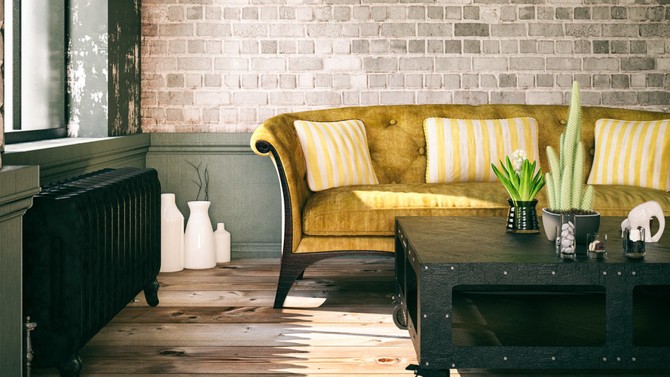
Photo: asbe/iStock
Don't Make Things Personal
While family photos, personal achievements and souvenirs displayed around the house might have made the space feel like home for you, this is one of the quickest ways to alienate buyers says designer, Home Made Simple star and Yelp home editor Lauren Makk. "Remember that you're not just selling a house, you're selling a dream," she says. By packing up your precious memories and mementos, you give someone else the chance to envision their future in your home.
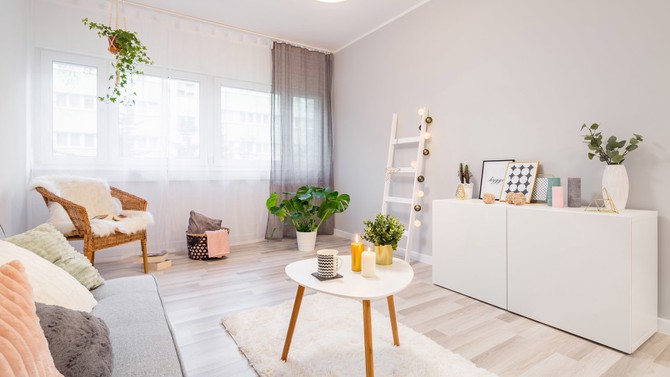
Photo: in4mal/iStock
Go for a Total Sensory Experience
You've scrubbed and cleaned and dusted your house to perfection—but how does it sound? If you live in a busy area with lots of noise, consider throwing on some soft music, suggests Makk. By drowning out distracting sounds—think traffic, trains or even children playing—you keep people in the moment and in the space. And while the smell of your home might give you warm and fuzzy feelings, it's best to play it safe with a couple unoppressive scented candles (choose complementary scents, like pine or linen, with a max of one per room), a few well-placed lilac and lavender plants, or by simmering orange and lemon peels with water for an all-over fresh smell.
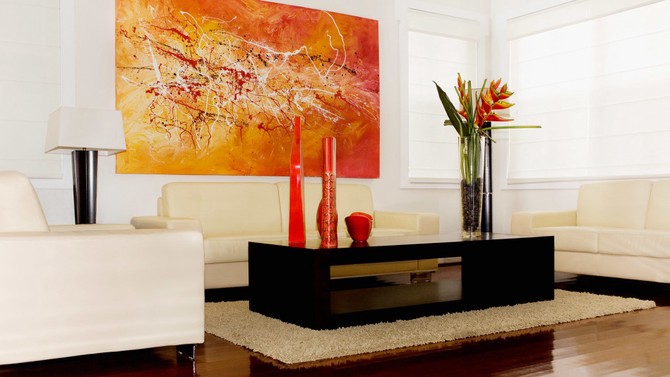
Photo: Glow Decor/Getty
Remember to Think Big
You've heard not to buy a bulky couch or a clunky TV console for a small living room, but go big with this: artwork. Large art fills unused vertical space, which leads the eye up to give the illusion there's more height, says Cheryl Eisen, the founder of the home staging firm Interior Marketing Group that appears on Bravo's Million Dollar Listing New York.
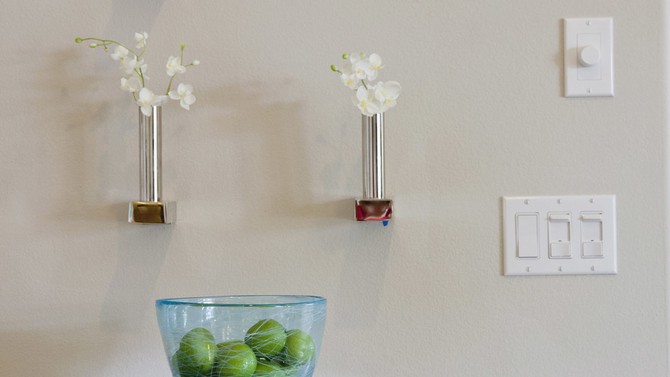
Photo: Eric Hernandez/Getty
Check the Spot You Forget to Clean
You regularly mop the floors and dust the windowsills, but this one little spot can stick out like a sore thumb if everything else is sparkling. Barb Schwarz, the founder of Staged Homes.com and The International Association of Home Staging Professionals, says she finds that light switch plates are often one of the grimiest places in the home, and worse, homeowners don't even notice. But she has seen people at open houses noticing these little things, which means your guests likely will, too. Schwarz scrubs these down with a cloth and a few sprays of heavy-duty all-purpose cleaner (she happens to swear by Krud Cutter).
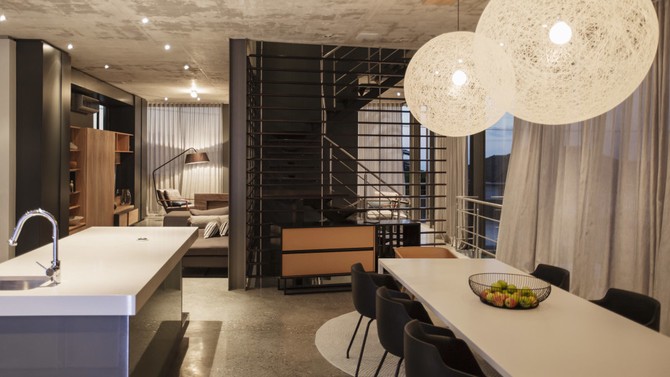
Photo: Astronaut Images/Getty
Warm Things Up—Without Pillows and Blankets
A foolproof way to make any part of your home more inviting is to have lighting that's flexible with the time of day, mood or event. Meridith Baer, who stages homes for A-list clients like Julia Roberts and Brad Pitt, puts dimmers on every light switch to help set the right ambience. She suggests keeping them fully lit in the day and then lowering them in the evening since homes look best with a soft glow at this time. Not to mention it helps create a more relaxing environment to help you unwind or sets the tone for an intimate dinner party.
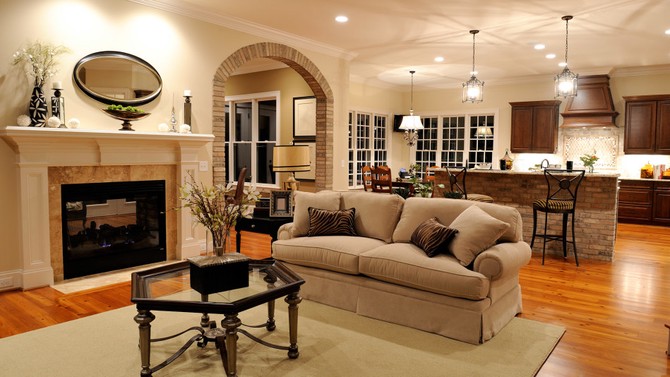
Photo: EricVega/Getty
Keep Your Traffic Flow Clear
The number one mistake people make with rugs is choosing the wrong size, says Kayla De St. Jean, the co-founder of Premier Home Staging who stages houses on HGTV's Flip or Flop. There should be a clear path from room to room that doesn't involve sidestepping around an armchair or walking single file because the rug tightens the amount of space. Unless your living room is extra small, De St. Jean suggests a 3-foot path for the main traffic flow to make the space comfortable, not crowded.
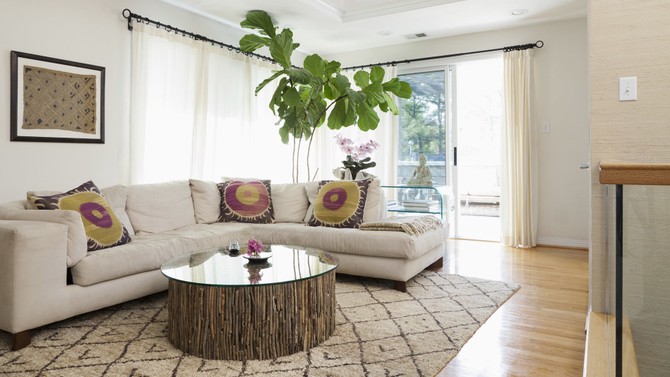
Photo: Spaces Images/Gety
Hack Your Chunky-Looking Furniture
If you have a slightly too large coffee or dining room table, but don't want to toss it because it's an antique passed down from Grandma, you can change the "weight" of an object by adding a cut-to-shape piece of glass on top of it, suggests Baer. The addition of glass makes the piece feel a little less heavy.
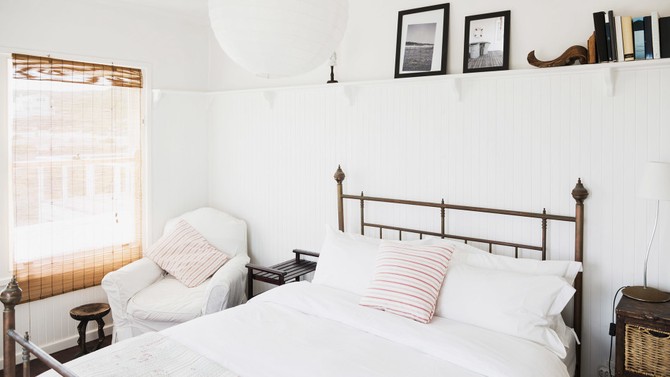
Photo: Astronaut Images/Getty
Make Space in the Bedroom for Another Activity
When potential buyers see a bedroom with just a bed and dresser, it gives the impression that there's not enough space to do anything else. Which is why Baer recommends putting a small club chair, or if the room's a little larger, a chair and side table, that gives the bedroom another function to make it seem more spacious. Just be sure to keep the chair to scale with the room—meaning that if your space is tight with low ceilings, you should probably go with a low-back armchair, not a leather club.
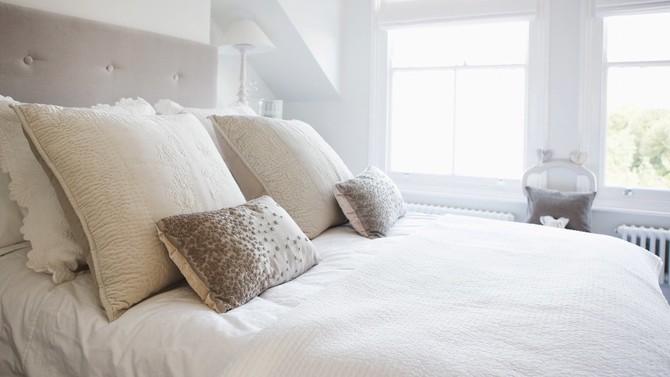
Photo: Daly and Newton/Getty
Design the Fluffiest Bed
Baer says the key to having a bed that makes you want to dive right in isn't the puffy comforter or array of throw pillows. To replicate the luxury beds you see in photos of the most expensive real estate on the market, Baer suggests buying a featherbed. The extra layer helps plump it up and give it the mushy look that a comforter alone can't achieve. Along with ironed sheets and your comforter folded at the bottom, you'll feel like you're sleeping in the penthouse every night.
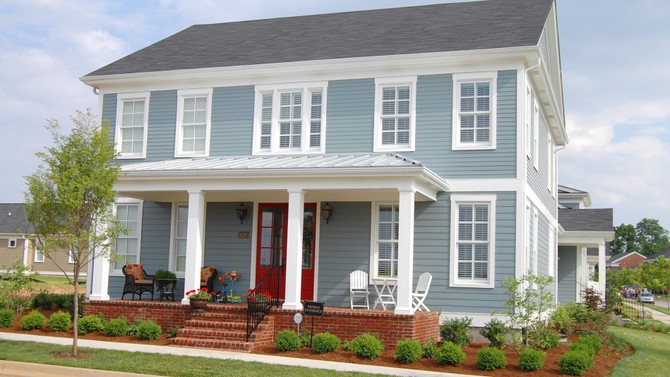
Photo: Photography By Raven Mathis/Getty
Count to Three to Make a Good First Impression
Stagers know that a home's exterior can make or break whether a potential buyer steps in the door. And the easiest way to tell if your home has curb appeal? Count how many colors it's painted. Look at the body, trim (including window and door casings), shutters and your front door. If they add up to more or less than three, your home may be in need of a change, according to Schwarz. More than three exterior colors can look incoherent or take away from the architecture and one or two tend to look boring and dated. If you like a more monochrome look, you can still follow the rule by painting in three different shades of the same hue.
Published 03/28/2018

